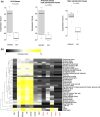Where Are the Formerly Y-linked Genes in the Ryukyu Spiny Rat that has Lost its Y Chromosome?
- PMID: 38478711
- PMCID: PMC10959550
- DOI: 10.1093/gbe/evae046
Where Are the Formerly Y-linked Genes in the Ryukyu Spiny Rat that has Lost its Y Chromosome?
Abstract
It has been predicted that the highly degenerate mammalian Y chromosome will be lost eventually. Indeed, Y was lost in the Ryukyu spiny rat Tokudaia osimensis, but the fate of the formerly Y-linked genes is not completely known. We looked for all 12 ancestrally Y-linked genes in a draft T. osimensis genome sequence. Zfy1, Zfy2, Kdm5d, Eif2s3y, Usp9y, Uty, and Ddx3y are putatively functional and are now located on the X chromosome, whereas Rbmy, Uba1y, Ssty1, Ssty2, and Sry are missing or pseudogenized. Tissue expressions of the mouse orthologs of the retained genes are significantly broader/higher than those of the lost genes, suggesting that the destinies of the formerly Y-linked genes are related to their original expressions. Interestingly, patterns of gene retention/loss are significantly more similar than by chance across four rodent lineages where Y has been independently lost, indicating a level of certainty in the fate of Y-linked genes even when the chromosome is gone.
Keywords: Tokudaia osimensis; Y chromosome; evolution; gene expression; gene loss; spiny rat.
© The Author(s) 2024. Published by Oxford University Press on behalf of Society for Molecular Biology and Evolution.
Figures

References
-
- Bastian FB, Roux J, Niknejad A, Comte A, Fonseca Costa SS, de Farias TM, Moretti S, Parmentier G, de Laval VR, Rosikiewicz M, et al. The Bgee suite: integrated curated expression atlas and comparative transcriptomics in animals. Nucleic Acids Res. 2021:49(D1):D831–D847. 10.1093/nar/gkaa793 - DOI - PMC - PubMed
Publication types
MeSH terms
Substances
Grants and funding
LinkOut - more resources
Full Text Sources

